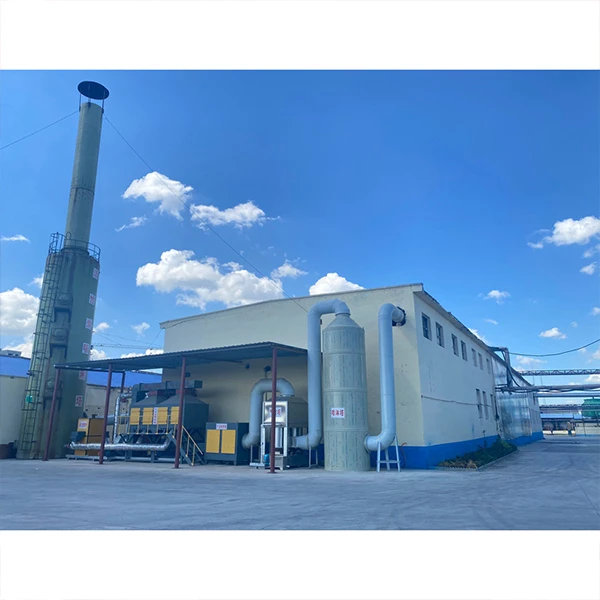The Market Dynamics of Cellulose Powder Prices
Cellulose powder, a versatile and biodegradable polymer derived from plant materials, has gained significant traction in various industries. From pharmaceuticals to food production and cosmetics, cellulose powder serves as a binding agent, thickening agent, and stabilizer. As demand for sustainable and natural ingredients increases, understanding the pricing dynamics of cellulose powder becomes crucial for manufacturers and consumers alike.
Factors Influencing Cellulose Powder Prices
1. Raw Material Availability The primary source of cellulose powder is wood, cotton, and other plant fibers. Fluctuations in the availability of these raw materials can significantly impact prices. Factors such as climate change, deforestation, and agricultural practices play a pivotal role in determining the supply chain's stability.
2. Manufacturing Processes The method of producing cellulose powder varies, influencing its quality and pricing. Processes like hydrolysis, mechanical grinding, and chemical treatment all require different levels of investment in technology and resources. Manufacturers that utilize more environmentally friendly methods may incur higher costs, which can be reflected in the final price of the product.
3. Market Demand The growing trend toward natural and organic products has led to an increase in the demand for cellulose powder. Industries such as food and beverages, pharmaceuticals, and personal care are increasingly seeking cellulose-based products due to their eco-friendly attributes. This heightened demand can drive up prices, especially if supply does not keep pace.
4. Global Trade and Tariffs Since cellulose powder is traded globally, international trade policies and tariffs can affect prices. Trade agreements or restrictions can lead to increased costs for importing raw materials or finished products, impacting market prices. Additionally, geopolitical factors can create fluctuations in supply chains, leading to variable pricing.
5. Competition and Innovation The cellulose powder market is highly competitive, with numerous manufacturers vying for market share. Innovations in production techniques and the introduction of alternative cellulose sources (like agricultural waste) can influence market prices. Companies that are able to offer high-quality products at competitive rates will likely capture a larger share of the market.
6. Economic Conditions Broader economic trends, such as inflation rates, currency fluctuations, and consumer spending habits, also play a role in pricing. In times of economic downturn, consumers may seek cheaper alternatives, leading to a potential decrease in demand for premium cellulose powder products. Conversely, in a growing economy, demand may surge, leading to increased pricing.
cellulose powder prices

Current Trends in Cellulose Powder Prices
As of late 2023, cellulose powder prices have been somewhat volatile, reflecting the complex interplay of factors discussed above
. Reports indicate that prices have risen by approximately 15% over the past year, mainly due to increased production costs and heightened demand in various sectors.The food industry has particularly seen a surge in interest in cellulose powder as a natural thickening agent. With consumers increasingly seeking clean-label products, food manufacturers are incorporating cellulose powder as a way to enhance texture without artificial additives. This trend has, in turn, placed upward pressure on prices.
On the other hand, the pharmaceutical industry continues to be a significant driver of demand for cellulose powder, especially in the production of tablets and capsules. As the global population ages and the need for medications increases, the demand for cellulose-based excipients is expected to grow.
The Future Outlook
Looking ahead, cellulose powder prices are likely to experience continued pressure due to ongoing demand across multiple sectors. However, advancements in sustainable sourcing and production methods may help stabilize prices in the long run.
Additionally, the growing emphasis on sustainability and environmental stewardship is likely to encourage more manufacturers to invest in eco-friendly production techniques. This shift could potentially balance supply and demand dynamics, leading to more stable pricing structures.
In conclusion, understanding cellulose powder prices requires a multifaceted approach that considers various external factors. As industries continue to recognize the benefits of cellulose powder, being informed about market dynamics is critical for stakeholders throughout the value chain. Continuous monitoring and adaptation to market trends will play an essential role in navigating the future landscape of cellulose powder pricing.
-
Rdp that The Revolutionary Polymer Powder Transforming Modern Construction MaterialsNewsAug.11,2025
-
Hpmc Powder that Versatile Additive for Detergents and Personal CareNewsAug.11,2025
-
Hpmc Hydroxypropyl Methylcellulose that Essential Building Material Additive from Shijiazhuang Gaocheng YongfengNewsAug.11,2025
-
Hydroxypropyl Methyl Cellulos Hpmc that Essential for Construction ApplicationsNewsAug.11,2025
-
Mhec Powder that Revolutionizing Construction Chemistry with Cellulose Ether SolutionsNewsAug.11,2025
-
Industri Hpmc that The Global Backbone of Advanced ConstructionNewsAug.11,2025




